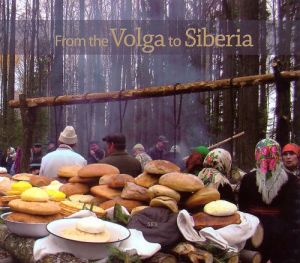How are Finno-Ugric peoples doing in today's Russia? Are these minority groups surviving the pressure of globalisation? This book takes a look at the recent history and current situation of Finno-Ugric peoples from the Volga bend to Siberia. The articles provide a first-hand view of the current status and identity of the Khanty, Komi, Mari and Udmurts. Extensive image material shows us their everyday lives today, while archive pictures offer glimpses of life more than a century ago. Also included in the book are children's drawings depicting their ideas of Udmurt ethnicity.
How are Finno-Ugric peoples doing in today's Russia? Are these minority groups surviving the pressure of globalisation? This book takes a look at the recent history and current situation of Finno-Ugric peoples from the Volga bend to Siberia. The articles provide a first-hand view of the current status and identity of the Khanty, Komi, Mari and Udmurts. Extensive image material shows us their everyday lives today, while archive pictures offer glimpses of life more than a century ago. Also included in the book are children's drawings depicting their ideas of Udmurt ethnicity.
Kirjastoluokka: 91
SKS: n toimituksia 1361
How are Finno-Ugric peoples doing in today's Russia? Are these minority groups surviving the pressure of globalisation? This book takes a look at the recent history and current situation of Finno-Ugric peoples from the Volga bend to Siberia. The articles provide a first-hand view of the current status and identity of the Khanty, Komi, Mari and Udmurts. Extensive image material shows us their everyday lives today, while archive pictures offer glimpses of life more than a century ago. Also included in the book are children's drawings depicting their ideas of Udmurt ethnicity.













